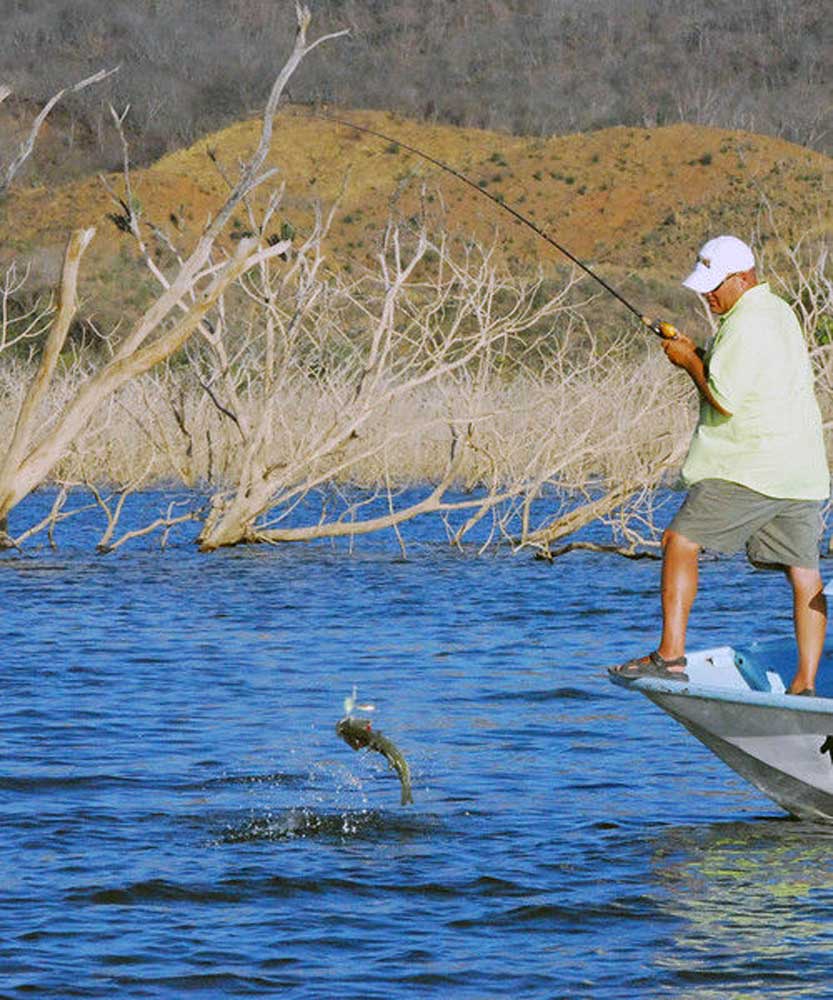Inching Up
Published 4:07 pm Saturday, May 14, 2016

- STEVE KNIGHT/STAFF DIFFERENT ROD LENGTHS have pros and cons, but the final decision on whether to stay in the 6-foot range or expand to a 7-foot rod could give fishermen an on-the-water advantage.
I needed to borrow a rod, but I did not like either option. On one hand there was a well-worn 6-foot-6 rod, the size I normally fish. The other choice was a still-in-the-wrapper 7-foot-something.
My first thought was to stay with what you know. Besides, I am not the tallest person in town and the thought of using a rod more than a foot taller than I am has always been a little intimidating.
Trending
Being a guy, a new toy won out.
I took the 7-footer and laid it down in the boat, intending to have it only as a backup. Of course that plan did not last long. For one reason or another I was grabbing for another rod, and the long rod just happened to have the lure tied on that I needed at the time.
It only took a few casts and hook sets, and the skepticism was gone and the long rod was suddenly the one I was reaching for the rest of the trip. Just like when I bought a 6-foot rod to replace a 5 ½-footer with the ever-popular pistol grip, and then went to the straight 6-6, I found whatever concerns I had about a longer rod were certainly more mental than anything else.
Having time to think it through it made sense that the length would result in longer casts, but more importantly it would provide more leverage when setting the hook. The bottom line of that was more fish in the boat.
I could not explain it (or anything else) using physics, but it made sense when I thought about a fishing trip to Louisiana’s Chandeleur Islands years ago. One night we went to one of the rigs to catch redfish under the lights. I was using a baitcasting rig and as someone once said every fish was like catching a bucket of cement off the bottom of the ocean.
In contrast another fisherman on the trip who had always wanted to catch a redfish on a fly rod had almost no trouble getting one to the boat. It was the leverage of the longer rod that gave him the upper hand.
Trending
I admit I am late to the party when it comes to 7-foot rods. So late that 7-footers have given way to 7-6s, 7-11s and even 8-foot behemoths that are banned from some tournament circuits.
In fact in much of the bass fishing world 7 foot has become the standard as fishermen have learned to use them for everything from worm fishing to deep-diving crankbaits.
Talk to the experts or read reviews of the longer rods and the No. 1 and maybe only drawback is that casting accuracy drops off in comparison to 6- or 6 ½-foot rods. Other issues might be trying to use them for flipping in tight spaces or for some who fish out of a kayak, but even those hurdles have been conquered.
There is a lot more that goes into rod buying than length alone. There is fiberglass versus graphite, and of course most fishermen go graphite these days. Then there is the difference between IM6, IM7 and IM8 graphite, which are industry terms to designate graphite weave. In most cases the higher the number the finer the weave and the faster the action. An IM8 is going to be stiffer than an IM6, and thus will cast a lure farther. It is also a lot stronger, and thus harder to break under normal fishing pressure. However, not all IM8 or IM6 rods are made alike. The IM designation is an identifier for one graphite supplier and not an industry standard even though the designation is commonly placed on a lot of rods.
Then there are guides, micro, single foot or double foot. The micro guides are something that have not caught on with a lot of fishermen even with the promise of less weight, better sensitivity and line control (casting distance).
Instead most manufacturers have gone with a hybrid of single- and double-foot traditional-sized guides with the heavier double foot guides nearer the reel for strength.
A lot of the decision on what rod and length is still a personal choice. Being able to try one on the water is the best place to learn the pros and cons. For most of us our test site is going to be an aisle in a sporting goods store where shaking it in the air or bending it on the floor is the only feel we get.
It is hard to determine if 7-foot rods are a trend or here to stay. That is often the case with fishing and hunting equipment. Sometimes items get hot because they truly are the better mousetrap. Sometimes fishermen and hunters jump in because everyone else is buying and they hate to be left out.
But the long rods have been around for a decade now and options are increasing with the length. Sometimes we just have to be forced into trying something new and different.
Have a comment or opinion on this story? Contact outdoor writer Steve Knight by email at outdoor@tylerpaper.com. Follow Steve Knight on Facebook at Texas All Out
doors and on Twitter @txalloutdoors



